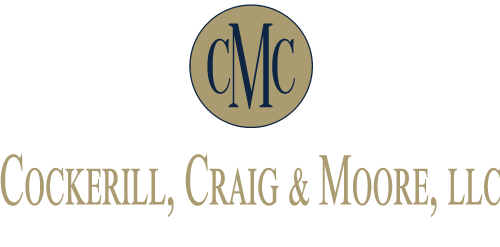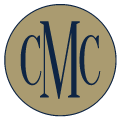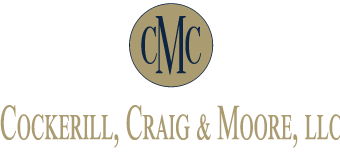LESSON FOUR: DIRECT EXAMINATION – THE LAWYER / WITNESS TANGO

For an attorney direct examination is more difficult to do effectively than cross-examination. Cross examination is the trial lawyer’s equivalent of the home run or the booming drive down the middle of the fairway while direct examination is like bunting a runner into scoring position or making a putt, they get little attention but they are essential to success. To bring about a smooth direct examination the witness and the attorney must work together so the witness understands his or her role in the case, how their story will be told, and the dance steps of the questions they will be asked and the answers that the attorney can anticipate. There needs to be a rhythm and a comfort level between the lawyer and the witness – not so much choreographed so you see or hear the novice dancers counting their steps – but a comfortable flow all the same. Nothing shakes a witness’s credibility on direct examination more effectively than a blank stare in response to a direct question which in turns leads to an objectionable leading question from the attorney. Judges and jurors won’t appreciate well organized direct testimony and will recognize testimony that is unprepared. The trial attorney and the witness must take the time to prepare the direct examination so that the two are comfortable with the scope, language, and even the order of the questions that will be asked and the responses given. Don’t over rehearse a witness or have them memorize a script so it appears canned. This also results in the witness rushing through answers or becoming lost if an objection, stipulation, or a judge’s comment causes a distraction or diversion. Witnesses need to understand and feel comfortable with the role they play. The role that the SIU Investigators play is a fact source, a credible, objective, professional fact source not an advocate or partisan out to “win” the case. Witnesses who try to be too “helpful” often diminish their own credibility.
INSTRUCTIONS FOR THE WITNESS
-
- HOW A WITNESS TESTIFIES – WORD CHOICESHow a witness testifies may be as important as what they testify to in presenting testimony persuasively. Witnesses who speak in a tentative style using the hedges “I think…”, “It seems like…”, “Perhaps…”, “Uh…” and using a questioning tone in responding to a question, as if seeking approval for the answer, are more likely to have their testimony discounted even where it is accurate. “Fudge” words, slang or shorthand take away from a witness’s credibility. Witnesses must avoid the following phrases because they invariably weaken their testimony:I think… Possibly… I guess… Probably… I believe… Correct me if I’m wrong… I may have… I might have… Maybe… I assume… Perhaps… My understanding…Avoiding this powerless style of speaking can allow the witness to be perceived as more convincing, competent, intelligent and trustworthy. Using the active voice in speaking, putting narrative testimony in the present tense, as if it were happening now and in clear, unambiguous terms creates an increased level of confidence in the speaker’s knowledge and truthfulness. Witnesses should not hesitate but should think before they speak. Being hyper-correct or grandiose in speaking style can have an equally negative effect. It is most important to avoid using words or phrases that are out of character. The judge and jury will sense a witness is not comfortable and judge their testimony to be less credible.
- BODY LANGUAGE
Smile, if you smile the jury, or the judge, will smile too. Relax the statement that when you tell the truth you don’t have to remember what you said is true. When a witness can tell their story in a narrative style, like they were sitting in the kitchen over coffee telling a story, they will be the most likeable and persuasive. Make eye contact and keep your head up, don’t slouch or fiddle with your pen, papers, clothing or jewelry. When being questioned look at the person asking the question but when testifying make sure to make eye contact with the judge or the jury, they are the ones that you are testifying to. Rolling your eyes during objections or cross examination, shaking your head or making comments under your breath create negative impressions with the judge and jury. Chewing gum or sucking on hard candy must be avoided.
-
- APPEARANCE
You are presented as a professional, look like one. A business suit is appropriate for men and women. Men should always wear a dress shirt and a tie, unless there are special circumstances, such as when they are a uniformed professional or member of the clergy. It should go without saying that hair, makeup and accessories are understated to maintain your professionalism (not merely the impression of professionalism) and not to draw attention away from the substance of your testimony.
-
- WHAT DO I TAKE TO THE WITNESS STAND WITH ME?
Nothing. Anything you take on the stand with you, a folder, file, notepad, report is something that the other side can ask to see and potentially read to the judge or jury. Any report, photograph or other material needed to present your testimony or refresh your recollection can and will be provided by the trial attorney presenting the case.
-
- RECOLLECTION
Documents you use or that the attorney presenting the case uses, to prepare you for your testimony become discoverable. Make sure that anything that you use to prepare for your testimony is shared with and reviewed by the attorney trying the case. Notes or reports that have not been reviewed or produced in discovery will present a problem at trial if they contradict other information produced in discovery or introduced into evidence. If you do not recall details you can ask to review your report to refresh your recollection about certain details, i.e., a date or a license plate number or address. If you do not have a recollection of a piece of information we can use an evidentiary procedure called Present Recollection Refreshed. These are the steps involved in recollection:
- The witness cannot recall something.
- The attorney cannot jog the witness’s memory through questioning, including leading questions.
- Counsel shows a writing or other item to the witness and allows them to review it silently.
- If the witness can testify he or she now recalls the information independent of the writing they may testify to that independent recollection. Their recollection has been refreshed.
- If the witness cannot now recall the events after having reviewed the writing the attorney will now try to introduce the writing into evidence as a Past Recollection Recorded.
The steps for Past Recollection Recorded:
- The memorandum or record concerns a matter about which the witness once had personal knowledge.
- The witness now has insufficient recollection to testify fully and accurately.
- The memorandum or record was made or adopted by the witness while the matter was fresh in their memory.
- The memorandum or record correctly reflects the witness’s former knowledge.
SUMMARY The presentation of persuasive direct testimony requires attention to detail and the establishment of a palpable level of comfort between the trial attorney and the witness that comes across to the judge and the jury. This comfort and confidence transfers to the judge and jury, who then become confident that the witness’s testimony is truthful, and they are comfortable adopting it as part of their story of the case. The words used, the unspoken body language, and the appearance of the witness contribute to this persuasive package.
Contact CockerillCraigMoore Law
To learn how we can help you protect your rights and interests as a litigant in civil litigation, contact the results-driven Haddonfield defense litigation attorneys at CockerillCraigMoore Law online or call us at 856-795-2220. Next up in the series: Lesson Five: What Makes a Good Witness Good?


